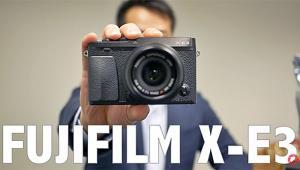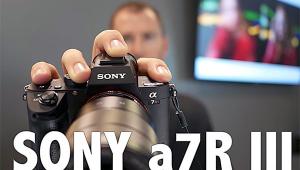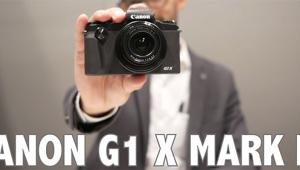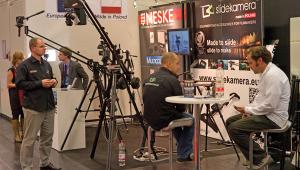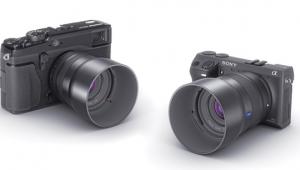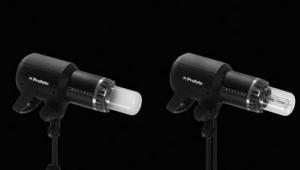Special Report: photokina
Trends On Diversity, Power, And Pride Of Workmanship
Education, it is said, is what is left after you have forgotten everything
you learned at school. Spotting trends is somewhat the same. You have to study
something closely; then try to ignore all the details; then make sense of what
you remember.
On this basis, I saw three trends at photokina. The first is that the center
of gravity of the whole business--sales as well as production--is
moving to the east. The second is that this was the photokina of batteries.
And the third is diversity.
For years, China has been growing as both a manufacturer and a market, but at
last, there is a big enough bourgeoisie to buy significant quantities of high-end
goods. The percentage of rich Chinese is tiny, but the population is so vast
that they are extremely numerous in absolute terms. Alpa (www.badgergraphic.com)
told me that China is their biggest single market. The cheapest Alpa is around
$7500 and it is quite easy to top $10,000, depending on the lens and back you
choose...
Fred Zhou, the Alpa importer, told me that there is a tremendous hunger in China
for information about film cameras and processing, and that at the top of the
market--he also imports Linhof, Gilde, and Bergger--there is very
little interest in digital. Of course, low-end digital in China is making enormous
strides, far faster than anyone expected, but this isn't the market that
interested either him or us.
 |
|
|
We are also seeing innovation from China, rather than just (rather poor) copying.
Shen-Hao (www.shen-hao.com)
showed a 5x12" panoramic camera, though it is hard to see how they can
sell many at $2480 FOB Shanghai, and both 6x12 and 6x17cm rollfilm backs ($220
and $510 respectively, again FOB Shanghai). They also had cameras based on these
backs, though the Fotoman (www.badgergraphic.com)
6x12 and 617 cameras, again made in China, were considerably better finished
even in prototype form. I'll come back to these elsewhere in my reports.
Both Russia and India are making progress, though less rapidly than China. The
quality control on cameras such as the Horizont and Zenit is far, far better
than it used to be; fotoMagazin (published in Moscow) is one of the finest photo
magazines in the world; and once again, Russia is a big market for high-end
photo equipment.
India is mired in postcolonial protectionism though this is slowly improving:
Harison (www.harisonphoto.com)
of Amritsar is a typical example of a forward-looking company that is involved
in both traditional mechanical engineering and electronics, with good continuous
lighting and flash units, background paper holders, wall booms, tripods, single-use
camera openers, and more. They are picking up more and more OEM work and probably
represent the future of the subcontinent: remember that very high educational
standards (for a Third World country) mean that when India does take off, it
will do so spectacularly and may well catch up with the rich West a lot faster
than China.
Thailand is an increasingly important manufacturer of photo goods--they
make some superb studio flash units and other professional equipment. I have
used Ekasilp flash (call: +662 4 57 01 23 or e-mail: ekasilp@idn.co.th)
and been well impressed, and at this photokina they were showing newer, better,
more powerful, and more efficient flashes, just like everyone else in that line
of business.
Nearer home, Elektrona (www.elektrona.si)
of Ljubljana in Slovenia had some brilliant new battery power packs for running
studio flash away from the mains--someone should pick up this product--and
of course Foma (www.foma.cz)
of the Czech Republic is now about the biggest exclusive manufacturer of black
and white film not to have experienced serious financial troubles. And the finest
camera store I have ever visited, anywhere in the world, is Foto Skoda (www.fotoskoda.cz)
in Prague.
Batteries
Batteries: what can you say about them? Perhaps one should quote Catullus'
immortal love poem: Nec sine te nec tecum possum vivere (neither without you
nor with you can I live). They always go flat at the least convenient moment,
in the same way that films run out and memory cards fill up. But we can't
easily live without them unless we stick with classic mechanical cameras, which
is one reason why I do exactly that. As long as I have a thumb, my film winds
on, and as long as I can see, I can guess exposure and set the shutter speed
and aperture, and of course focus.
There were however incredible numbers of battery manufacturers and distributors
at the show--maybe two or three times as many as in previous years--and
what was impressive was the ever-increasing capacity of rechargeables. The first
AA rechargeables I bought, over 20 years ago, were 160 mAh. Today's have
hit 2500 mAh. That's 2.5amp hours. With four of them you could run an
old 6v motorcycle. Another trend was ultra-fast recharging, in as little as
15 minutes for the lower-capacity batteries.
Then again, a Nikon F (which I was using in the 1970s and 1980s, and still use
sometimes today) didn't need any batteries at all, and I had selenium-cell
Weston meters. You can't even see through the viewfinder of my current
Nikon F70 unless it has batteries in, let alone meter or take pictures. Progress?
Yes, but at a price.
- Log in or register to post comments
